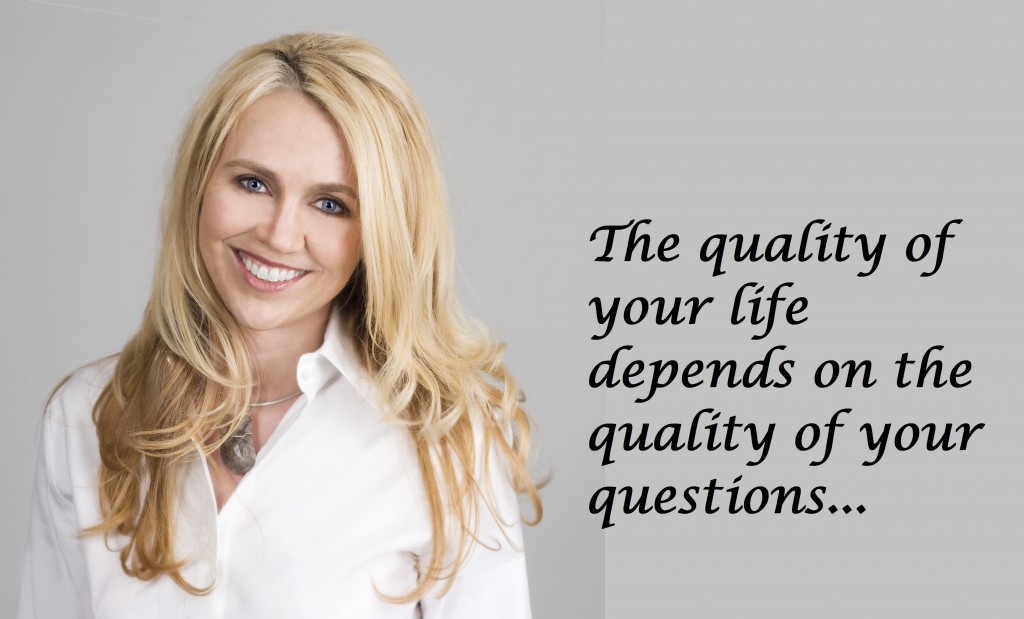
Profit (or loss) also known as net income (or net loss) are commonly referred to as the bottom line of a company because this figure sits at the bottom of the Profit and Loss statement. Net profit occurs when there is a surplus (or positive amount leftover) after all the expenses of running the business have been deducted from the revenue billed to customers. A loss (or negative profit) can of course incur if expenses are greater than revenue.
Cash flow is another beast entirely.
Positive cash flow occurs when the net amount of cash that flows in and out of a business during a period of time is greater than zero. In a nutshell, it means that the bank account of the business went up during the period because the company’s liquid assets are increasing. And for those of you following along with the Penny and Ernest metaphor, it means that the amount Ernest collected and put into the bank account, exceeded the amount that Penny spent.
KEY POINTS:
- It is possible for a company to have positive cash flow while reporting a loss on the Profit and Loss
- If a company has positive cash flow it means that it’s liquid assets increased over that period of time
- It is entirely possible for a company to post a loss on its Profit and Loss but still have positive cash flow because it received enough cash from borrowing and investing activities to offset the loss for accounting purposes
ANALYSIS:
Net profit or loss from the Profit and Loss statement is merely the starting point for calculating cash flow. Most businesses use something called “accrual accounting”, which means that profit includes revenue and expenses that may be collected or spent at some future point in time and some non-cash amounts. And if these items haven’t (or won’t) hit the bank account, they aren’t relevant to cash flow.
Since the Profit and Loss contains stuff that hasn’t happened yet (or is not relevant to cash), we cannot rely on it solely to make good decisions for the business. We must remove or adjust everything that hasn’t happened yet or is not relevant to cash, in order to get back to a number that represents pure cash flow. Said another way, we are looking to isolate the amount that Penny and Ernest have each run during the period.
To do this in practice, we need to look at the inter-relationship between the Profit & Loss statement and the Balance Sheet. This holistic perspective will give us a true picture of cash flow.
EXAMPLE:
For example, if we were to start from a position where the expenses of a business exceeded revenue (i.e. a net loss or negative income), the most likely result would also be negative cash flow. It is always more difficult to achieve positive cash flow when the business starts from the position of operating at a loss.
However, it is entirely possible to start with a net loss and simultaneously achieve net positive cash flow, but the following scenarios (which are not an exhaustive list) would have to happen in order for that to be feasible:
- The company could receive an influx of cash from either borrowings (i.e. bank debt) or the injection of further equity via investors.
- If the company has a net loss and also a large amount of depreciation expense recorded, the add-back of the depreciation expense (which is a non-cash item since no money leaves the business when depreciation is deducted for tax purposes) could push the company into positive cash flow territory.
- The sale of an asset, or just the reduction in total fixed assets over the period due to depreciation, could also kick up enough cash to help the company record positive cash flow under certain scenarios.
- The collection of receivables (or other money owed) that were posted in a prior accounting period but were collected and put into the bank in the current period is another simple way to push a company into a cash flow positive zone.
- Expenses are recorded on the Profit and Loss when they are incurred, not when they are paid. If a company posts a net loss due to a large amount of accrued expenses (where they were deducted in computing the loss but are not due to be paid until a subsequent financial period), it is entirely possible that the adjustment for these expenses might enable a company to maintain positive net cash flow, despite recording a net loss for tax purposes.
11 Feb 2015
Is Shark Tank Bad for Small Business?
If you’ve ever watched reality TV (and don’t say you haven’t because we all know it’s too easy to get sucked in by the drama and controversy), you may have noticed a specific formula…
First you find a cause – dating, small business, cooking or home improvement. Next, you add a few unassuming characters – some very relatable but also few who are downright crazy, nasty or delusional. And last but not least, you add just enough controversy, intrigue, shock and cutting remarks to keep the masses coming back for more each night.
In the end, are any of these contestants (or their small businesses in the case of Shark Tank) really any better off? Probably not, but what you have done is create some compelling TV and sold a bucket load of ads to big brands like iSelect, Swisee, Safeway, NAB and Mitre 10.
The other night, I watched Channel Ten’s latest reality TV import, Shark Tank. The premise is pretty straightforward.
A few naive and nervous and numerically challenged small business owners lined up to pitch to a panel of cool, critical and cashed-up potential investors.
Some ideas got funded for relatively small amounts. Most ideas (and their creators) got ripped to shreds by the panel.
So, the show is essentially Survivor, The Apprentice and The Bachelor all rolled into one with Australian small business contestants, and a catchy brand that has the ominous word “shark” in it.
How could that possibly fail?
As I watched, I wondered, ‘Are any of these small businesses likely to breakeven or become profitable and cash flow positive?’
And, perhaps not suprisingly, the answer is “not likely”.
Why is that? Because some of the ideas were pretty interesting. The cricket cooler, the motorized skate board and the hamdog may actually have global potential, but to be viable in the long term, the owners really need to do their homework first and know their numbers.
Case in point – not one of the small business owners who pitched had done market research with their product (or prototype) and could quantify the size of their market. Without that vital information, how can they possibly estimate topline revenue, market penetration or the value of their business with any precision or clarity?
And without those last three things, it’s impossible to give a meaningful pitch or ask for the “right amount” of capital. I’m sure you will agree, other than the guy who thought his hairbrained rental resume idea was worth $2.5million, most of the entrepreneurs vastly underestimated the amount of working capital that they needed.
Several contestants floundered when they got asked the big questions about breakeven, margins and cash flow. Yes, the dreaded cash flow question pretty much stumped everyone.
Most were asking for arbitrary sums of money to commercialise their inventions without regard for how much it might really take to get their brand out there and win their first major customers. One pair even thought it was clever to ask the investors to chip in $150,000 so they [the founders] could leave their secure day jobs and start working in the business full time. Crazy right? If you the owner don’t have skin in the game or work in the business full time, chances are you should still be writing your business plan, not pitching it on national TV in front of 5 sharks and a million viewers.
The cricket cooler duo were the most polished in terms of delivery and presentation. They recognized that patents and intellectual property were vital to their valuation and attractiveness to the sharks, but drastically underestimated the value of locking things down in India – the number one cricket market in the world. And the sophisticated sharks knew that Australia is just a mere drop in the bucket, compared to the potential in a market like India.
Unlike the really trashy stuff – Bachelor, Idol, or Real Housewives of Melbourne – the show didn’t make me feel icky or shocked while watching the sharks tear the flesh off the bones and gnaw away at the contestant’s dreams. I sort of expected that would be the main draw card and the whole premise of the show. Why call the show shark tank if you don’t intend to set up a blood bath and feeding frenzy?
But as an entrepreneur, I did feel genuinely remorseful for each of the contestants. The small businesses who got funded gave up decent chunks of equity for relatively small injections of capital – which may or may not be enough to get them to market and earn their first customers. And the ones who didn’t walked away without any constructive advice or tangible instructions on how to go away and get their idea investor-ready.
27 Aug 2014
Can Biology Predict Business Success or Failure?
What if the best quantifier for business success is not be your IQ, emotional intelligence, charisma, or good looks? New research indicate the secret may reside in the level of testosterone you were exposed to while in your mother’s womb and the impact it had on the length of your ring finger.
Are Females at a Disadvantage?
Despite the fact that many women start small businesses, statistics show that only a small percentage of Fortune 500 or venture funded businesses are headed up by women. And there are a lot of ideas and reasons put forward for “why” that is – most women don’t have enough technical expertise, most VCs are headed by men (and they are by and large sexist boys clubs), women find it harder to juggle family and career, fewer women ask for money etc. Unfortunately, most of these are just hypotheses and none of them have been proven to be true. Furthermore, they don’t explain the interesting outliers – why do some women break through and achieve phenomenal business success?
Let’s Look at The Science….
Economists Aldo Rustichini and Luigi Guiso were particularly intrigued with the answer to that question. So much so, that they ran a studyinterviewing over two thousand Italian male and female small-business owners. Halfway through the interview, each entrepreneur was asked to hold out their right hand so that a photograph could be taken of their palm. The researchers wanted a close up of each hand so that a precise calculation could be made of the length of the ring finger relative to the index finger.
Those (male and female) with longer ring than index fingers, were found to be more assertive, competitive, stronger (stamina) and more willing to take risks. Also, the most successful among them (in terms of business success) were found to have ring fingers 10 to 20 per cent longer than their index fingers.
And as you hold up your hand now to examine your biological endowment, you’re probably questioning the efficacy of this research? It sounds implausible doesn’t it? Truth be told, it’s not really about the length of your fingers per se, but what was going on in your mother’s womb during your early months of gestation.
Just after the first trimester, fingers begin to become more defined and elongate. The early limbic brain is also forming and becoming organized. Both are affected and influenced by the prevalence of testosterone and oestrogen in the womb. Interestingly, the foetal ring finger has many receptors for these hormones, while the index finger has less. The presence of testosterone lengthens the foetal fingers, while oestrogen stunts or stops their growth. Thus, the balance of the two hormones in your mother’s womb directly impacted the length of your ring and index finger differently and the development of your brain.
While all of the ways that these hormones impact the brain are not yet fully known, researchers have noticed that higher levels of prenatal testosterone hardwires your brain to be more sensitive to testosterone, permanently. For those of you who were exposed to more testosterone during this formative period, it means that your body now reacts more strongly to fluctuations in bloodstream testosterone. And it’s also why men’s ring fingers tend to be a bit longer, while women’s index fingers are a bit longer on average.
All of this is of course just a convoluted way to explain that the length of the ring finger is a reliable marker for fundamental brain system differences and also pre-disposition to your ability to be able to deal with stress and testosterone. These factors have also been found to correlate with business success.
This study seems to suggest that entrepreneurs are in fact special – hard-wired that way from the earliest stages of foetal development. More men might statistically be wired this way than women, but if you are wired this specific way, it transcends gender.
But Wait, Here’s A Fascinating Distinction….
In the Italian study, the successful female entrepreneurs displayed a distinctly male pattern: their ring fingers were longer. In fact, it was a much more pronounced difference in length than the men’s. And their ring fingers weren’t the only things that were bigger: on average, they ran bigger companies, with higher growth rates and displayed a greater capacity to withstand enormous workloads and pressure.
Now before you get too excited and insist on taking a photo of the hand of every entrepreneur that you might invest in, or get depressed because your own ring finger is shorter, not all of this can be chalked up to determinist biology.
Even Rustichini is cautious about these findings and postulates that all of these biological components may only encompass 40% of the explanation. The other 60% is highly influenced by experiences and conditioning (nurture). If the environment that you are brought up in as a child does not support your entrepreneurial spirit (particularly if you are a woman), then your potential will be markedly curtailed, regardless of your genetic predisposition.
The good news, however, is that sex is more of a distraction than a determining factor. Finger length tells you far more about potential business success than gender ever will. However these foetal stage brain differences, coupled with the early childhood environment, each play a role in determining which entrepreneur has the stamina, persistence, confidence and risk-taking tolerance vital for success. Thus, it appears that biology has something to do with business success and growth, but it still might be a bit premature to run out and blame your parents!
**This blog is an excerpt taken from a series of posts and press releases on this subject in 2012 by Rhondalynn Korolak. She is a lawyer, chartered accountant, media commentator, keynote speaker and best-selling author of 3 books, the most recent of which –Sales Seduction–is in theTop 20 Sales and Marketing Books on Amazon.com
We live in a world with unlimited distractions, challenges, emergencies and interruptions – it’s a miracle any of us stay focused, sane and on track towards what we want (business improvement).
There are always going to be multiple tasks and priorities competing for your time – marketing campaigns to design, team members to manage, customers to respond to, business opportunities to explore, personal commitments etc. However, when you try to tackle too many things at the same time, nothing gets done. In the end, success and business improvement come down to focus.
In a world where there never seems to be enough time to get everything done, how can you avoid overwhelm, stay on track and get the things that are most important to you done? After all, it has been said there is always enough time in the day to do everything that is WORTH doing.
Here’s a list of questions that I have compiled over the years and shared with my clients and friends. They have helped me to put every challenge, “emergency” and distraction into perspective so that I can choose to focus my energy on what I really want and move forward toward my goals and business improvement each day. I hope some of these will also resonate with you…
1. Has Anyone Died? If not, relax, take a deep breath and know that as bad as things seem right now, “this too shall pass”. I learned this lesson the hard way when I was twenty four years old and had to come to grips with the terrible news that my mother had been murdered. As horrific and paralysing as this event was in my life, I eventually began to rebuild and discover strength that I never knew I had. And I learned a very important lesson – as long as no one has died, the situation really isn’t that grave, and there is always a solution or upside to every challenge you face.
2. Are You Trying to Eat an Elephant in One Sitting? Breaking things into bite-sized chunks makes the world of difference. Having broad high level business improvement goals are good but oftentimes it is easy to get overwhelmed by the amount of work that has to be done. That’s why having an actionable plan is essential – a step by step plan to help you move forward every day and get from where you are to where you want to be. After all, a journey of 1000 miles begins with one single step.
3. Are You In A Bad Neighbourhood? If you are in the ghetto emotionally, you need to change your physiology immediately. That means get up and get moving – put on your favourite song, connect with someone face to face or do a hobby/sport that makes you smile. Whatever it takes, do it NOW.
4. Are You Grateful For What You Already Have? It is impossible to attract more of what you want into your life if you are feeling ungrateful about what you already have. It has been said that the whole is more than the sum of its parts. In many ways gratitude is a bit like that – it’s not what you say, the mere words that count, but sum of the words and the heartfelt emotion that you put behind them.
5. Are You focused on What You Want or Don’t Want? Whether you realise it or not, you are visualising things all the time – visualising either what you want or don’t want. If you are relentlessly focused on the negative outcome and are riddled with fear, your thoughts will impact your reality and push what you want further away.
6. Does it Have To Be Perfect? Perfection can immobilize you and hamper business improvement – prevent you from making a decision, starting a project or signing off on a piece of important work. Truth is, most tasks on your list don’t have to be 100% perfect, you just need to pull the trigger and sign off on them today. The other way that this problem can show up is when you deceive yourself by believing that no-one else can do the job (even simple routine tasks) to your exacting standard, so you must do it ALL yourself. Try the 80/20 rule – delegate what you do not have to do yourself and give yourself permission to be human!
7. Are You Still Holding On To The Past – Have you ever caught yourself saying “last time I tried that, it didn’t work”? Or have you ever avoided doing something that you know you need to do but were afraid because it didn’t work last time? Even though it’s a good idea to stop doing what clearly isn’t working, it’s also important to remember that the past does not necessarily equal the future. If you catch yourself using reasons from the past to justify why you are not moving ahead today, you owe it to yourself to recognize this for what it is – self sabotage – and take action.
8. Are You Listening To Your Own Inner Voice? – The quickest way to guarantee failure and unhappiness is to worry too much about what other people might think. Deep down you know what is right for you in every circumstance. Sometimes it is tempting to suppress or ignore your gut instincts but there is freedom and relief in choosing to listen and to stand behind the decisions that you know are right for you. If you choose to please others, there will always be at least one other person who is unhappy with your choices, plus yourself.
9. Are You Avoiding Your Fears? – Ironically, everything you want is on the other side of your fear. Sometimes we are coaxed to the edge of our fears and pushed off, yet other times we willingly wander there, oblivious to what lies ahead. Either is good – for at the moment you feel your feet leave the safety of the cliff top – you will always find your wings and fly.
10. Are You Afraid of Making a Mistake? – It is only when we are stretched that we discover new things about ourselves. Often it is adversity and mistakes that allow us to become aware of and uncover our own innate talents. If mistakes were fatal, we wouldn’t enjoy most of the modern conveniences that we take for granted every day. Taking a risk and making a mistake is far better than doing nothing. In the brilliant words of Theodore Roosevelt “the best thing you can do is the right thing, the next best thing is the wrong thing, and the worst thing you can do is nothing”.
11. Do You Have Reasons or Results? – In life you either have results or you have reasons, but it is impossible to have both. If you don’t like the results you have produced, you will do one of two things (1) find a reason or excuse to explain why or (2) change your behaviour to produce a different result. Looking for justification as to why things have not worked out is a pointless exercise. When we look at causes, rather than reasons, things are very different. There is no failure, only results. Essentially, it means never having a reason or excuse again.
12. Are You Unrealistic? In order to succeed and achieve your goal of business improvement, you have to be at least a little unrealistic. Being realistic, never led to any significant change, innovation or giant leap forward. Only unrealistic thinking will achieve a result that until now seemed impossible. In the ‘60s, U.S. President Kennedy seemed unrealistic when he announced to a very large audience that America would put a man on the moon in less than a decade. Prior to that statement, a lunar landing seemed impossible, or at the very least, something that was a long way off.
13. Have You Forgiven Yourself & Others? Perhaps we never really completely understand life until we face death. What if we all started off on our deathbeds? Would it make a difference? Would it change the way we choose to play the game? Would it take us to forgiveness sooner? On our deathbed, I doubt any of us would say ‘I wish I held onto more anger and resentment or took a bit longer to forgive.’ In fact, if you were to look out into the future and imagine the world and all of your relationships from a position where you knew with absolute certainty that they would be gone tomorrow, would you act differently today? Would you mourn the years that you kept yourself enslaved by bitterness, blame and indignation? Would you lament the loss of pleasure, love and peace that could have been yours if only you could have found a way to forgive sooner?
14. Are You Hiding Who You Really Are? – We all have scars, but they are not ‘terminal’ blemishes, evidence of your defects, or validation of your lack of worthiness. Richard Nixon once famously said “the finest steel goes through the hottest fire”. Life isn’t easy but that perhaps it was never designed to be! Amazing things can happen, character and strength often develop through the most challenging circumstances – whether the heat destroys you or sculpts you is entirely up to you.
15. Are You a Poor Communicator? – Anytime you have more than one person observing an event, the door is open for the possibility of misinterpretation and miscommunication based on differing maps of reality. Learning to recognise that we all have different maps (filters by which we see and process the world around us) allows us to see the world through another person’s eyes and therefore understand, relate and communicate with greater respect and results.
16. Are You Thinking Inside Your Box? – Our beliefs about what is true, right, real or possible are largely assembled in childhood through a process called conditioning. Essentially children learn what is ‘normal’ from the people around them. These beliefs about the world can have a massive impact on how your life turns out. Einstein referred to limiting beliefs as the “boundary conditions of our thinking” – they act as a box that we unconsciously put ourselves in from a very young age. What we consider possible is influenced by these rigid ideas. That is why it has often been said that the thinking that got you to where you are now will never get us to where you want to be.
17. Are You Running Away? – Sometimes a fresh start can do you a world of good, but the interesting thing about a fresh start is that it never stays fresh for very long. The irritating part of physical or geographical changes is that you stay the same – wherever you go, there you are. As time passes you are forced to realise that while there may be a new job, new boss, new partner, or a new view out the window of your kitchen – you are exactly the same! Now might be a great time to look at the changes that need to come from within.
18. Are You Over Thinking It? – Most of us make a ‘decision’ today, knowing that tomorrow we can change our mind, backtrack or simply do nothing. That isn’t a decision. Unless you take action immediately towards your goal, you haven’t really decided … you are merely thinking about it.
19. Are You Motivated? – No matter whether you have experienced awful things in life or not, there is an innate drive in all of us to seek meaning and purpose. If we understand our ‘why’ then we can deal with any ‘how’ that life brings our way. Even in the darkest of nights, we can all find a way to let the light of who we really are shine through, if we believe in our hearts that there is a grander purpose.
20. Are You Driving The Bus? – I am the only one who can attribute meaning to the events in my life and the same is true for you. Positive, negative or neutral – the choice is always yours. If you are not happy with the choices you have made so far in life the great news is that you can choose new meanings immediately that will drive you towards your bright and compelling future. It’s never too late to become the person you were meant to be!
21. Are You Your Own Worst Enemy? – In my own life, it has never been the load or the obstacles that broke me, but rather the manner in which I chose to carry them. Despite what happens or what others think/say, it’s the things we tell ourselves when no one else is listening, that have the biggest potential to harm and hold us back. Re-writing negative self-talk is the single biggest gift you can give yourself this year.
It’s very easy to get so caught up in the emotion of emergencies, distractions and thoughts that don’t serve you – you can easily lose sight of what is most important to your success, business improvement and well-being. These simple questions (and keeping your sense of humour) are vital to helping you to stay focused and moving towards your goals and success.
What makes some content marketing irresistible, while the bulk of stuff you see every day is easily forgotten? Have you ever stopped to analyse what you choose to read, comment on and share versus what you choose to ignore?
Here’s a good example – the “hot mugshot guy” used in this post should be very familiar to you. Why? Because Jeremy Meeks shot to fame two weeks ago when the Stockton police department posted a photo of him on Facebook after arresting him on a serious weapons charge.
The image quickly went viral with hundreds of thousands of likes, comments and shares and the story was picked up by every major newspaper, radio and cable TV program across North America (and in many other countries). He now has two major modelling agencies chasing him to sign a contract.
Now Jeremy’s mugshot is not particularly fascinating, earth shattering, important or even relevant to the lives of most of us, yet somehow, this simple Facebook post unwittingly outperformed almost every other news story on the day it broke. It had the “je ne sais quoi” that is required for content marketing to go viral on a global scale.
And if you think about it, there are lessons that we can take from this story (and other successful posts like it) to boost the persuasive power of our own content marketing so that it inspires and ignites both passion and action among our readers and customers.
Contagious: What Makes Things Catch On?
What was it about the last piece that you read or saw – whether it be an article, photo, advertisement, content marketing or video – that took it from mildly interesting and elevated it to the realm of positively sharable?
As you no doubt suspect, content marketing that has the potential to go viral can be a huge asset to you for two reasons – it feels great to make it and it can bring lots of attention to what you’re doing to solve real problems for your customers. Unfortunately, if no one sees your content marketing, it’s not really that useful to anyone.
Content may be King, but you will be the Lord of a very small domain if you are still reaching only one hundred people next week with your valuable message. Here are my Top 5 Tips to magnify the chance of your message reaching hundreds of thousands based on neuroscience, behavioral science and the success of the most popular posts on Linkedin.
- Lists Work
Ironically, I read a post last week where the author lamented the overuse of articles titled “The Top 5 Tips”, “21 Secrets To” etc. He postulated “why do so many authors write posts with lists”? A quick bit of research on my part revealed that the Top three articles in the past few months on Linked in (in terms of readers, shares and comments) were all list based posts:
- 10 Simple Concepts to Become a Better Leader, Dave Kerpen .
- 6 Toxic Behaviours That Push People Away: How To Recognize Them in Yourself and Change Them, Kathy Caprino
- The #1 Career Mistake Capable People Make, Greg McKeown
In fact, nine of the top ten were list based articles. But could this just be a coincidence?
In-depth research by Buzzsumo supports this phenomenon. Buzzsumo analysed over one hundred million articles online and concluded that lists and infographics were more likely to be shared virally than any other content. Love them or hate them, lists outperform how to articles, videos, explanatory posts and other content marketing in terms of shares and comments. Done correctly, a good list post will provide hands-on, practical tips that you can put into practice today.
One of the vital elements that is believed to cause a list to spread, is its level of “practical utility,” as described by a recent study By Berger and Milkman (University of Pennsylvania – Wharton School of Business. The ability to use and apply the information contained in a post is a key element that drives content to spread virally. In effect, the list creates a memory inducing trigger.
Essentially, we tend to share what we’re thinking about—and we only think about the things we can actually remember. Lists make it easy for our brains to grasp, remember and file away valuable information for safe keeping and retrieval. They convey the content you are about to read contains a nice packet of useful, easy-to-digest information that you can share with others to add value and create dialogue.
- A Good Picture is Still Worth a Thousand Words (and Ten Thousand Shares)
Neuroscience has proven that your brain is a highly visual beast. Somewhere between 80% and 90% of brain activity is associated with making sense of visual stimuli, and the brain processes these visual stimuli much more quickly—about 40 times more quickly—than it does auditory stimuli.
This makes perfect sense when you think about the role that visual cues played in the survival of our ancient ancestors—particularly the way in which the old brain reacted quickly to keep our cavemen ancestors out of the jaws of tigers and mammoths. The old brain is extraordinarily fast at processing these visual cues, “seeing” them in only 2–3 milliseconds and reacting to them almost instantaneously.
In sharp contrast, it takes your new brain (or neocortex) a relatively snail-paced 500 milliseconds to process the exact same visual data. Since humans cannot rely on the slow processing speed of the new brain, you are hardwired to make decisions and take action at the old brain level that are mostly based on visual input and instinctual responses. Your neocortex kicks in much later in the process to help you find data, proof, and justification for the gut decision you have already made.
This of course makes visual imagery one of the most powerful triggers you can harness and use to your advantage when creating content. As they say, a picture really is worth a thousand words. However, not all pictures are created equal. The visuals you use in your content must mean something to the old brain of your prospect—they must have a “what’s in it for me” (WIIFM) message and they must stimulate a strong emotional response. A well crafted story or a sharp picture that captures the essence of your reader’s most pressing source of pain, holds the power to trigger a wave of comments and shares.
And as you might expect, the Top 3 posts on Linkedin all used strong graphics to convey a quick emotional response and draw readers in. The most successful, the article by Dave Kerpen also cleverly utilized a shareable infographic as the primary photo. It’s a visual snapshot and roadmap for the 11 concepts he outlines on leadership. It is no surprise that his article received over 126,000 shares on Linkedin alone and a whopping 7400+ comments.
- Not All Shares Are Created Equal
Not all shares will have the same impact on the ultimate reach of your content marketing. Studies show that getting just one person who has influence online to share your article can have a multiplier effect on your content. It pays dividends to pay attention to the influencers that are currently sharing content that closely matches or parallels your own. By building relationships with them and inviting them to engage, you can exponentially increase your chance of reaching 4x more shares, than by relying solely on your own network.
After analysing over one hundred million articles, Buzzsumo compared the number of social shares for articles that had zero influencers versus those that had at least one influencer (where an influencer is defined as someone who receives at least 200 re-tweets on average, for every 100 tweets posted). What they found was that just having just one influencer share your content will boost your reach and shares by 31.8%. Having three influencers doubles the number and having 5 would almost quadruple the number of social shares you receive.
Interestingly, some recent research in the area of neuroscience seems to back up the notion that some people are far more effective at spreading ideas, stories and content. In “Creating Buzz: The Neural Correlates of Effective Message Propagation”, Falk, Morelli, Welborn, Daumbacher and Lieberman mapped the brain centers associated with ideas that are likely to be contagious. They were hoping to create maps which could be used in the future to forecast which ideas should be successful and who is likely to be effective at spreading them.
The scientists found that increased activity in the Temporoparietal Junction (TPJ) and dorsomedial prefrontal cortex (“the mentalizing network”) of the subjects, was associated with an increased ability to convince others to get on board with their favorite ideas. What this research is suggesting is that some people may have a pre-disposition to be able to share ideas on a global scale.
As this research evolves, we will get closer and closer to discovering what differentiates ideas that bomb from ideas that buzz. Like all ideas, stories, content marketing etc, these concepts cannot spread virally on their own – they rely on effective social communication for dissemination. Messages which produce greater “mentalizing activity” in the brain when viewed are more likely to be passed on and the subjects appear to be more motivated to pass them on. The social currency of being a person who is known for spreading information of value (i.e. an information broker or ideas salesman) is incredibly valuable. Various networking sites such as Linkedin, Facebook and Twitter have long recognized this phenomenon and put formal strategies in place to promote these individuals as “information brokers or experts” and increase the overall engagement of readers with news and posts on their sites.
Case in point, the most successful article on Linkedin by Dave Kerpen was shared and commented by 5 highly influential readers. Those 5 alone were directly responsible for 511 likes and comments plus hundreds of LinkedIn shares, tweets and Facebook likes. As a result, over time Dave Kerpen has built up a following of over 458,000 people on Linkedin by writing great, shareable posts.
Similarly, Greg MeKeown’s post had 6 or 7 influencers who contributed to the large number of likes, comments and shares (particularly within Linkedin).
- Clickbait Sucks
For any entrepreneur, manager or blogger, headlines are vital to an even more important end — drawing a substantial amount of attention to topics that really matter. But designing memorable, curiosity-inducing headlines isn’t enough. As you know, content, articles and posts don’t go viral because people click — they go viral because people share.
“Clickbait” — overselling content marketing with outrageous headlines that entice the maximum number of people to click and visit a website — works to generate some views but it will never be enough to create viral content. Formulaic headlines don’t guarantee content that has the potential to go viral. To comment or share, your readers have to love what they see when they hit your site, see your video or read your post. That is why the two most crucial factors in motivating readers to share your content are the quality of and the emotion that you create with the insights you provide.
Ask yourself these three questions – “Does the content that I am about to post:”
- Engage or entertain on a relevant topic?
- Draw the audience in and invite them to imagine their world from a new perspective or inspire them to share their opinion?
- Deliver on the promise of the headline?
Headlines definitely matter but your content will only go viral if readers love what you are saying so much they are inspired to comment and share it with everyone. As you would suspect, all of the most read and shared articles on Linkedin delivered on the promise that the author’s made in their headlines – substantive posts, quality insights and practical tips that readers appreciated and felt compelled to share.
- We Share What Makes Us Feel Good
Emotion and repetition are the adhesives that cement events to your memory. As leading American neuroscientist Antonio Damasio puts it: “We are not thinking machines that feel, we are feeling machines that think.” Emotions play a part in virtually every decision you make, whether you like it or not, and sharing content is no exception. When something has an emotional impact on you, you are far more likely to remember and react; in that way, your strongest emotional responses will stay with you for your entire life because they create a deeper engram (or impression) in your mind.
Your emotions produce strong electrochemical responses that have been proven to directly influence the way you handle, respond to, and hold onto information. The cocktail of hormones that flood your mind when you experience strong emotions causes the connections in your brain to speed up, intensify, and be reinforced.
A strong emotional trigger is much more likely to drive you to share content or buy a product, than a rational argument for doing so. Emotional connections occur because your feelings are stirred. This happens whenever content you see causes you to “put yourself into the situation”. So content becomes great or memorable when it hooks you in—it effectively makes you a part of the scene and you feel the feelings of the story that is unfolding about something that is relevant to you.
As a sharing stimulus, emotion is incredibly powerful. And there is no more effective way to tap into or unleash the emotions of your readers than to tell them a story. Through the ages, we have passed on our history and our wisdom to our children in the form of stories. As a child, you likely came to expect a story from the people that you loved and looked up to—your parents, grandparents, siblings, teachers, ministers, and babysitters. Your brain felt comfortable and safe with both the stories and the storytellers and you are likely to pass on these stories, to your friends and your own children.
But the spectrum of emotions is large and research suggests that 3 particular emotions are more likely to result in content going viral. While anger, surprise and sadness motivated some people to share, awe, laughter and amusement universally outperformed all other emotions in inspiring social shares. For the most part, people want to be uplifted by posts and we also want to think that sharing interesting, practical and fun content brings value to our relationships, creates social currency, spurs conversation and inspires reaction.
This premise is supported by the Berger and Milkman study (University of Pennsylvania – Wharton School of Business), which examined the sharing of articles from the New York Times in 2008. They looked at approximately seven thousand articles to determine what characteristics the most-emailed articles had in common. After controlling for many other factors including author popularity, placement, timing etc., they discovered two features which stood out as being important to success – the positivity of the message and how much it excited the readers.
Not surprisingly all 3 of the top authors on Linkedin that I mentioned earlier utilized the element of storytelling to make their point. Their articles were positive, uplifting, fun and entertaining. Reading each one leaves you with the distinct impression that you can easily work these tips into your own work environment and that sharing these insights with your colleagues would be a great way to build camaraderie and create some thought provoking and constructive dialogue.
Summary
Even Aristotle (in 350 B.C) was obsessed with the pursuit of the secret to make his content persuasive and memorable – so that his ideas would be passed on from person to person. Replace oratory with online content creator, and Aristotle’s pursuit of the illusive key to what makes ideas catch on and spread, seems incredibly contemporary. Although with our modern day ability to track and analyse brain activity and data from millions of articles and websites at a time, we are much closer now to clearly defining the variables that cause us to engage deeply with and share content virally.
















